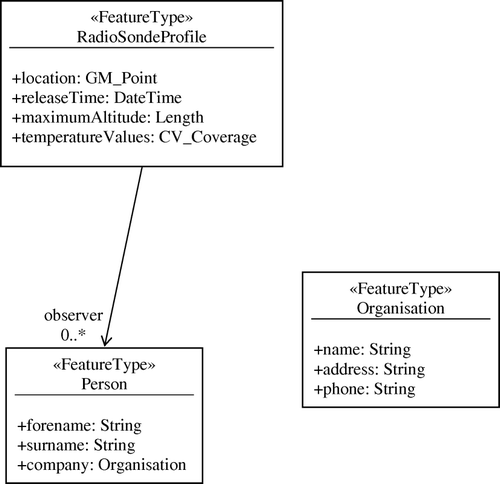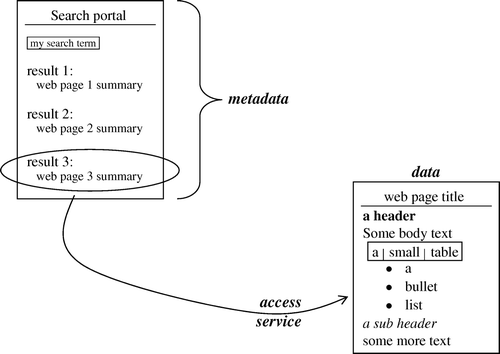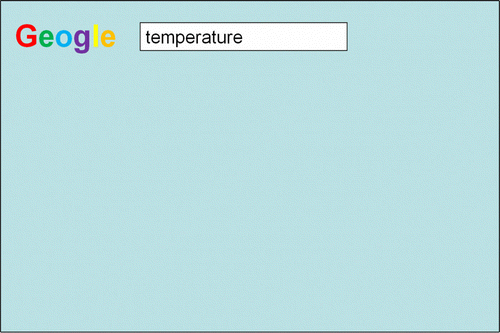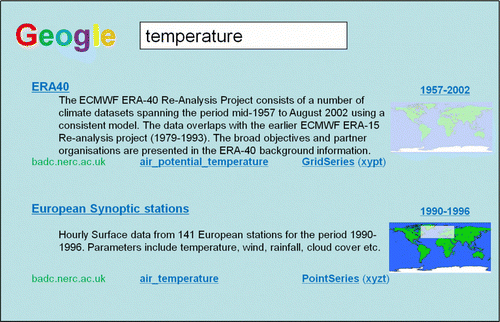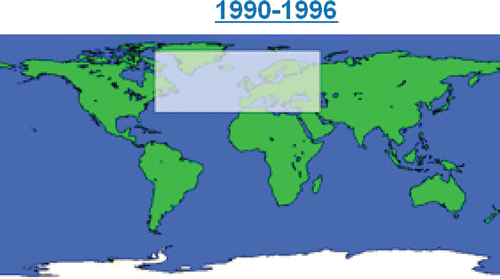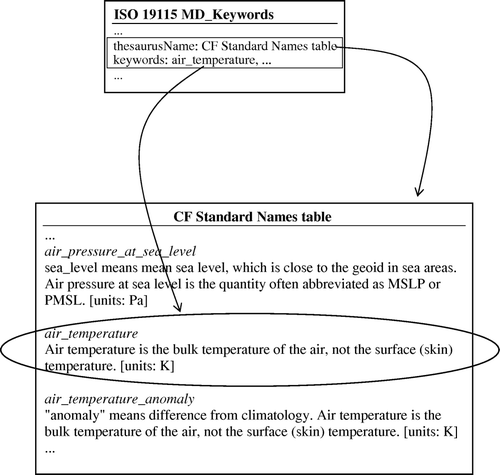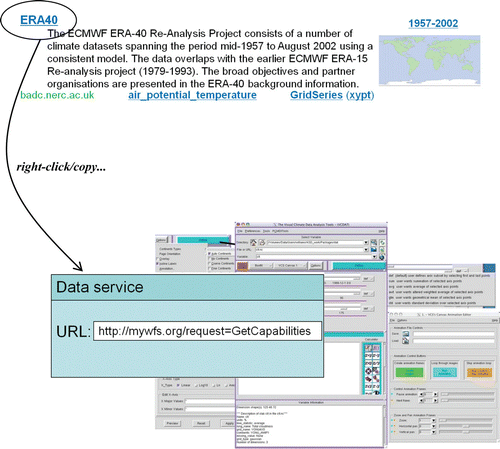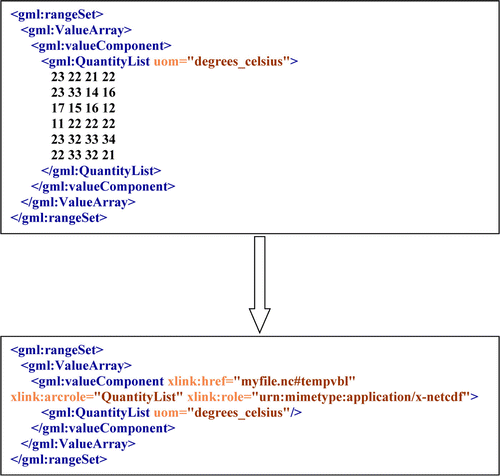Figures & data
Figure 6. ISO 19115 descriptive keywords and coordinate reference systems displayed in search portal.

Figure 7. Following ISO 19109, UML is used as the formal model for defining feature types. In this case a RadioSondeProfile is defined by attributes for location, time of release, maximum altitude, and measured temperature values. It is released by one or more observers who have a name, and work for some organisation.
